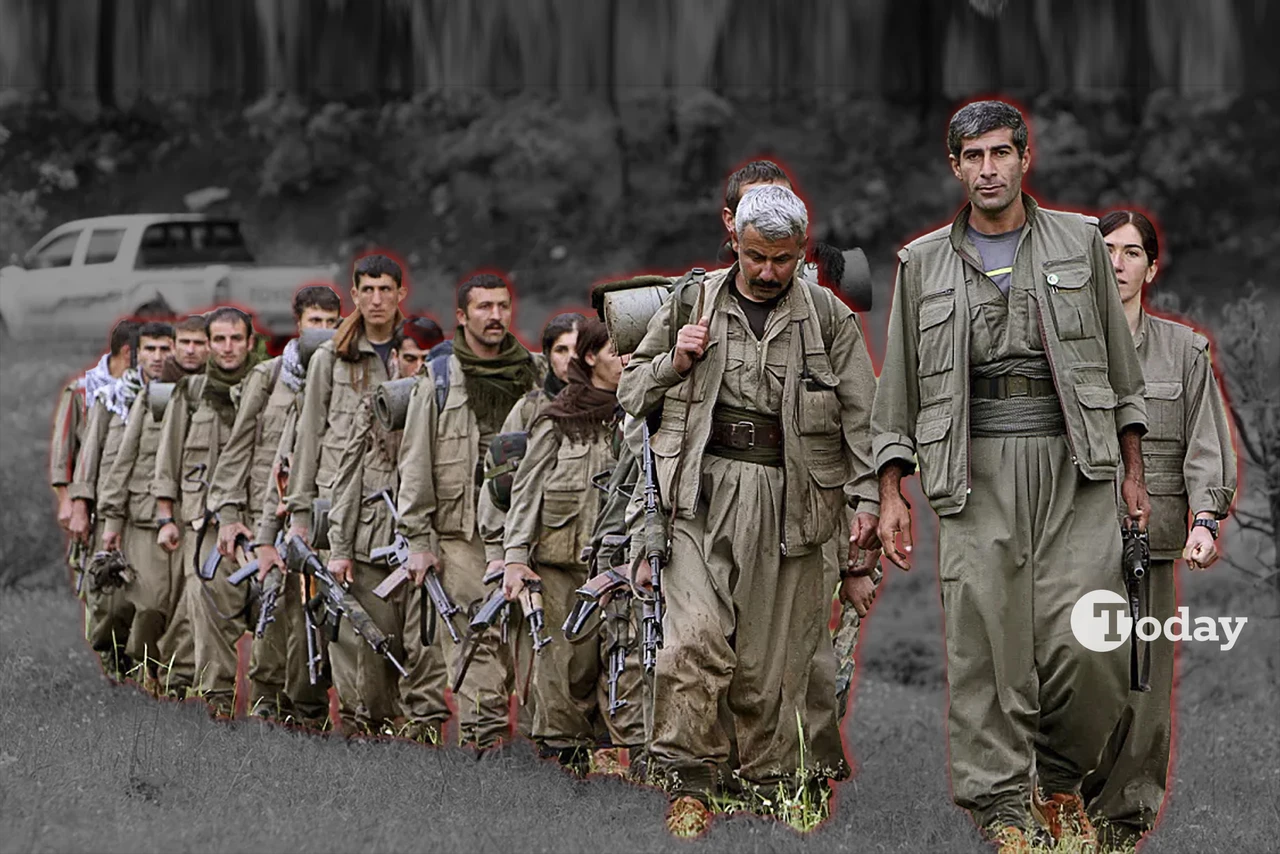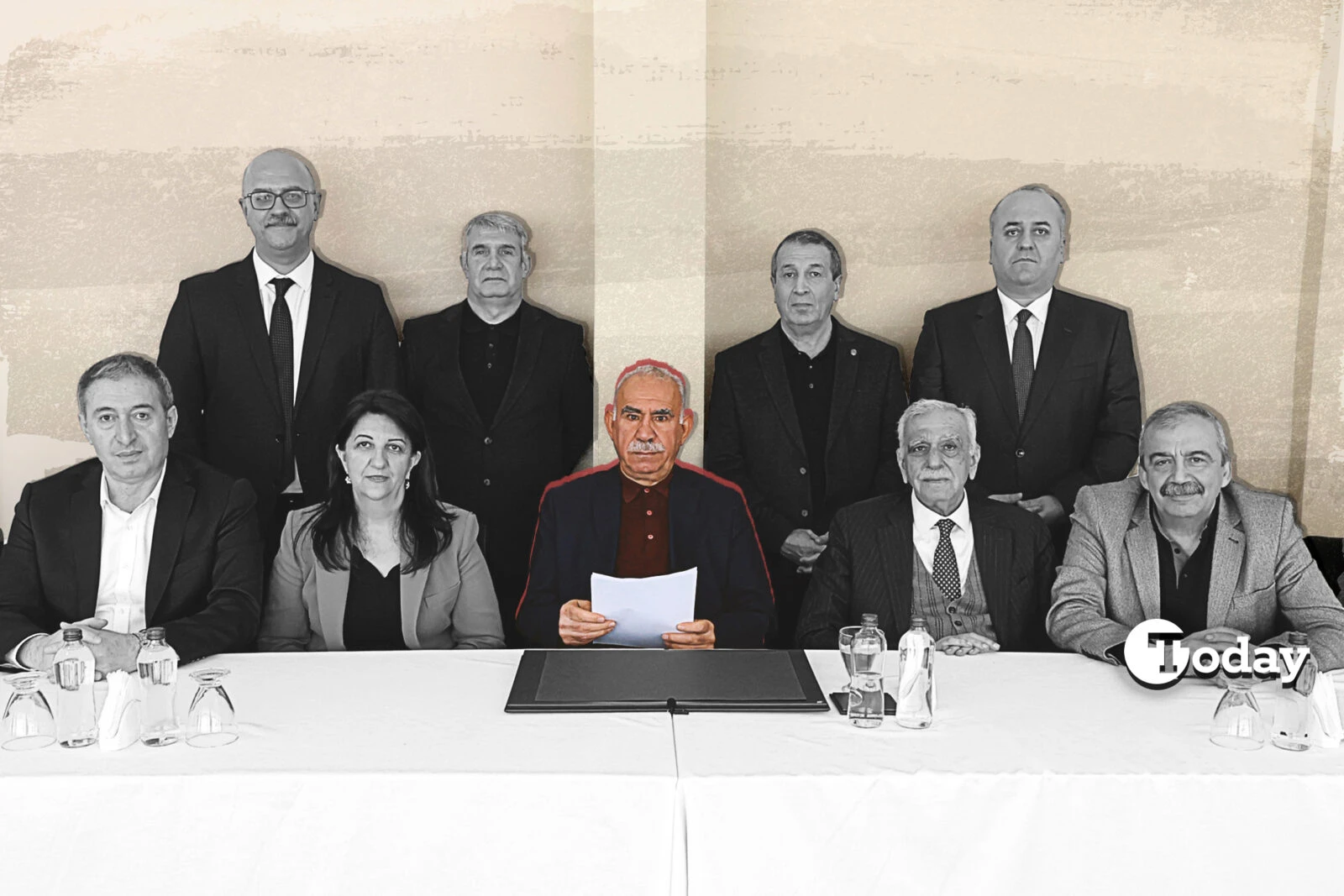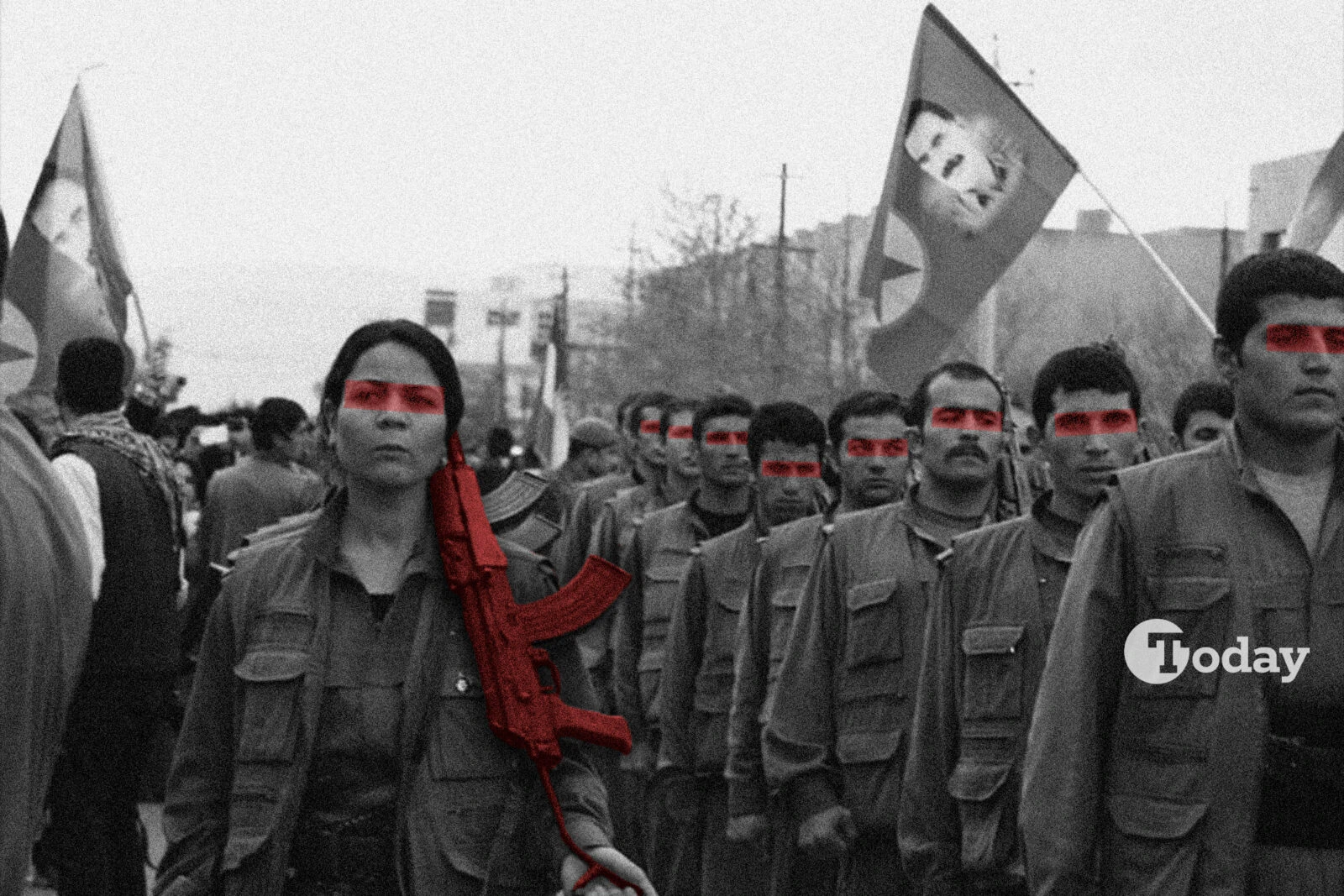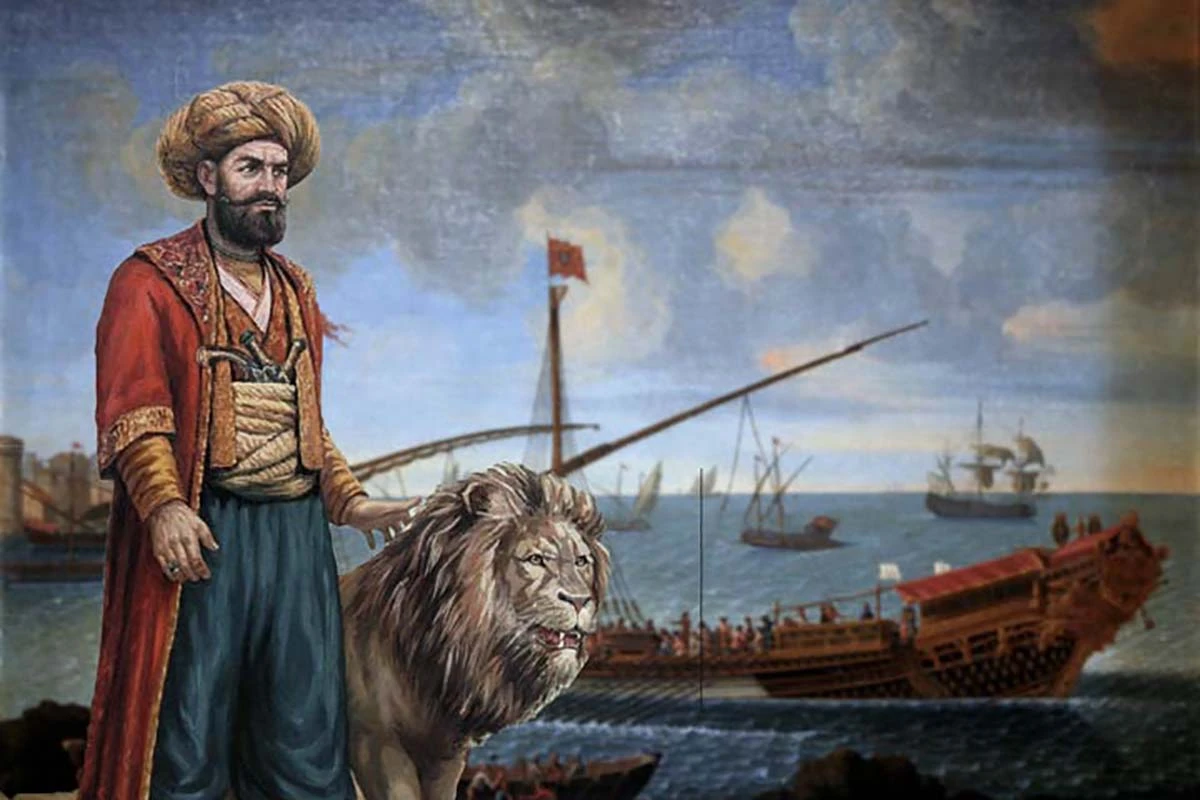Road to PKK’s disarmament in Türkiye: Political timeline
 Members of the terrorist organization PKK walking in an unknown place at an undated time, used on 1 April 2025 (Collage by Mehmet Akbas / Türkiye Today)
Members of the terrorist organization PKK walking in an unknown place at an undated time, used on 1 April 2025 (Collage by Mehmet Akbas / Türkiye Today)
The armed conflict between the Turkish state and the PKK has persisted for over four decades. Yet, recent political developments suggest a potential shift toward a negotiated end.
A known columnist with close ties to the government, Abdulkadir Selvi, wrote in his latest column that “the timeline has been accelerated,” claiming that the PKK is expected to convene a congress in April to discuss full disbandment. Citing behind-the-scenes developments, Selvi noted that Ocalan’s call for the PKK to lay down arms and dissolve all affiliated groups had initiated a decisive phase.
“Initially, a 2-3 month observation period was considered,” Selvi wrote. “But there’s a will not to prolong this. In righteous endeavors, one must act quickly. In the past, such processes were bloodily sabotaged. This region is a playground for the world’s largest intelligence agencies.”
Türkiye Today outlines the timeline of the evolving disarmament process—highlighting the latest milestones and placing them within their historical context.

“The October 22 process”
On October 22, 2024, Turkish politics was rocked by an unexpected statement from Nationalist Movement Party (MHP) leader Devlet Bahceli. His comments on PKK ringleader Abdullah Ocalan’s prison conditions reintroduced the imprisoned babykiller into the national conversation. Bahceli’s remarks sparked a wave of speculation, interpreted by many as a green light for re-engaging Ocalan in a possible disarmament process. After almost a decade, reconciliation and conflict resolution re-entered political discourse.
In a bold opening move, the MHP leader proposed allowing Ocalan to address the Turkish Parliament, signaling an attempt to control the narrative from the highest level.
Upon the call, in a landmark development, Abdullah Ocalan, the imprisoned ringleader, called for the group’s disarmament and dissolution in February 2025.
The partner of the government’s call regarding Ocalan, which represents Türkiye’s example of the “Nixon Goes to China” theory—the idea that a hardline leader’s peace-oriented move is more acceptable to the public—was met with confusion. Yet, it was not heavily questioned, as many assumed he must have had a calculated reason behind it as an experienced political player.
In the days when the terrorist organization declared a cease-fire following his call for its “self-dissolution,” he continued making unexpected moves, even reaching out to another key political symbol of the separatist movement, Selahattin Demirtas. In response, Demirtas publicly shared a prayer for his health.
Legal preparations and renewed talks (Nov–Dec 2024)
In the weeks that followed, Turkish authorities resumed contact with Ocalan on Imrali Island. Quiet but consequential meetings focused on the feasibility of disarmament and reintegration. Simultaneously, Turkish lawmakers from DEM Party, which has serious ties to the PKK, initiated discussions on legislative reforms, including partial amnesty frameworks for PKK militants.
During the phase, Ocalan issued a clear and public call: halt the violence and initiate disarmament. His words of “There’s no need for the PKK” echoed across media, international observers and among his supporters.

Ceasefire and initial steps (Jan–Feb 2025)
In response to Ocalan’s directive, the terror group’s so-called leadership announced a unilateral ceasefire in early January 2025. These steps were accompanied by Türkiye’s diplomatic outreach to Iraq, Iran, and Syria, aiming to prevent regional disruptions and ensure cross-border coordination. For the first time in years, a multi-track peace framework appeared viable.
The terrorists’ compliance with this call was also triggered by high-level Turkish security strategy. The PKK’s activity in Türkiye has significantly decreased in recent years, and without the Syrian branch’s aid, it would have been completely expelled from the country and cornered in Qandil.
Historical milestones: the road that led here
While 2024–2025 marked a new chapter, the story of disarmament is rooted in a longer, uneven history:
- Capture of Abdullah Ocalan (1999): His imprisonment led to the PKK’s first partial withdrawal, though it later unraveled.
- Kongra-Gel and rebranding (2003–2005): The PKK’s attempt to signal a shift to civilian politics failed to gain credibility. The group has chosen to keep its terror tactics.
- Oslo talks (2009–2011): Secret negotiations revealed mutual interest but collapsed under political strain.
- Dolmabahce declaration (2013–2015): The most ambitious peace initiative to date ended in renewed violence amid regional instability.
- Post-coup era (2016–2019): After the 2016 coup attempt, the state intensified its efforts for a crackdown on terror with securitization moves, sidelining dialogue after many attempts.
- Syria-focused conflict (2014–2024): Türkiye’s military operations against the PKK/YPG complicated the domestic peace agenda, as lines blurred between national security and cross-border threats.

What lies ahead?
This spring, the PKK is widely expected to hold a congress aimed at formally addressing its future. In fact, MHP leader Devlet Bahceli went so far as to suggest both a time and location for the gathering. In his Nowruz -a new year celebration for Turks and Kurds for centuries- message delivered in March, Bahceli declared, “To avoid any delay in responding to the Imrali call of February 27—and to honor our nation’s growing desire for a resolution—the PKK must convene its congress without hesitation and announce its disbandment.”
He proposed Malazgirt, a symbolic site commemorating the Turks’ historic victory in Anatolia, as the venue, and pointed to May 4 as the ideal date for this decisive step.
During the congress, a new message from the imprisoned PKK ringleader on Imrali Island is expected to be read aloud—an address anticipated to carry crucial instructions. The aim is for this message to solidify the decision and provide a clear, time-bound roadmap for the group’s disarmament, ensuring the process proceeds with concrete steps and avoids ambiguity.
Also President Recep Tayyip Erdogan recently commented on the process, stating that the Turkish state has facilitated the conditions for a disarmament call. “Our state has fulfilled its responsibility by ensuring that the call for action was made. Now, it is time for the organization to comply with the call without any ifs or buts.”
The success of this new phase hinges on three key factors: the sustainability of the ceasefire, consistent support for reintegration, and regional cooperation. While optimism cautiously grows, many remain wary—scarred by previous breakdowns. Yet for the first time in nearly a decade, the question is no longer whether disarmament is possible—but how and when it might finally happen.



